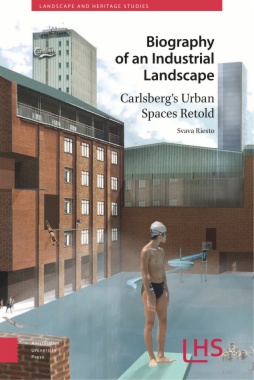Biography of an Industrial Landscape tells the story of one of the most significant urban redevelopment projects in northern Europe at the turn of the century. Examining the reinvention of the Carlsberg brewery site in Copenhagen as a city district, Svava Riesto unpacks the deeper assumptions about value that lie behind contemporary design, spatial planning and heritage practices. In particular, Riesto examines ways of valuing a vital yet seldom explicitly discussed feature of industrial landscapes: open space. Carlsberg's industrial open spaces were largely disregarded during the redevelopment, which was founded on canonical heritage thinking and ideas about urban space that were poorly equipped to include the characteristics of these spaces in the design's considerations. As a response, this account reappraises industrial open spaces. Drawing on Henri Lefebvre and biographical approaches to landscape research, the Carlsberg site's open spaces are presented anew as an interplay of materials, practices and the imagination - shaped and reshaped by water, yeast, industrial working routines and conflicting ideas about the future city.
- Cover
- Table of Contents
- Acknowledgements
- Introduction
- Carlsberg – A multifaceted case study
- Discovering post-industrial open spaces
- The structure of the book
- 1. A biographical approach to industrial landscapes
- Urban transformation and the need for new heuristic strategies
- Cultural heritage between conservation, transformation and activation of resources
- Urbanism and three ways to define place
- A biographical approach to landscapes
- Temporalities of landscapes
- Studying open spaces with Lefebvre
- Authors of landscape
- Investigatory techniques and source material
- Studies of the present redevelopment projects
- Studies of the production of open spaces
- 2. Site
- Carlsberg – Becoming a building site
- A walk
- Heterogeneity in retrospect and prospect
- Relational site in prospect and retrospect
- Chapters in the biography of Carlsberg as a relational site
- Carlsberg in the story of a hill
- The division of property shaping the urban landscape
- A landscape shaped by social order
- Site definition: An interpretative and generative activity
- 3. Space
- Reworking Carlsberg Square
- Axes as open space value
- Pre-industrial spaces as universally good
- Appraising topography and landscape processes
- Chapters in the biography of Carlsberg’s open spaces
- Yeast as an actor shaping Carlsberg
- Aesthetics of landscape gardening
- Tanker route and social spaces
- Water as an actor shaping Carlsberg
- Industrial open space as multidimensional lifeworlds
- 4. Sub-terrain
- When the spirit of Carlsberg resided in its cellars
- Chapters in the biography of Carlsberg’s cellars
- Technological histories of Carlsberg’s cellars
- Myths and uncanny cellars
- The cellars – A fascinating locus for imagination
- Conclusion: Biography of industrial open spaces
- Understanding industrial open spaces in the context of urban redevelopment
- Three ways of understanding change with Carlsberg
- Contesting ideas shape landscape
- Humans shape landscapes together with cohabiting actors
- Inherited cultural imaginary as a force in landscape formation
- Image accreditations
- References

